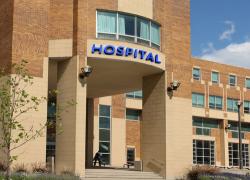 I decided to write about collaborative constancy after reading that CEO changes are occurring more rapidly at hospitals across the country.
I decided to write about collaborative constancy after reading that CEO changes are occurring more rapidly at hospitals across the country.
 I decided to write about collaborative constancy after reading that CEO changes are occurring more rapidly at hospitals across the country. A study conducted by the American College of Healthcare Executives found the average tenure for a hospital CEO is 5.6 years, while the turnover rate for the position averaged 17% in 2012 and 16% in 2010 and 2011.
I decided to write about collaborative constancy after reading that CEO changes are occurring more rapidly at hospitals across the country. A study conducted by the American College of Healthcare Executives found the average tenure for a hospital CEO is 5.6 years, while the turnover rate for the position averaged 17% in 2012 and 16% in 2010 and 2011.
Two innovative hospital CEOs whom I have profiled have been in their positions over a decade:
1) Phil Newbold, CEO at Memorial Hospital in South Bend, IN, tithes up to 1% of annual revenues to support innovation and has a portion of the hospital website devoted to innovation projects. All new employees receive innovation training that includes topics such as identifying problem areas, rapid prototyping, and execution. By reaching out to over 40 companies outside of healthcare who excelled at innovation, they developed a core competence in improving processes and spinning off services that generated revenue, as showcased in Getting It Done.
2) Bob Trefry, who retired as CEO of Bridgeport Hospital in Bridgeport, CT, sought to reinvent his role beyond being a short-term turnaround specialist. He had tried the latest theories, including re-engineering and rapid-sequence change processes, without success. Deficits increased, staffing decreased, and morale plummeted. With the encouragement of his Senior VP for Marketing, who had witnessed a successful structured dialogue process at her previous job, and the approval of physician leaders, he appointed two physicians to be co-chairs of a thirteen-member Medical Advisory Panel (for more information, please click here).
The charge to the Medical Advisory Panel was to engage physicians to analyze and recommend priorities to improve care for the community, physician-physician communication, and physician-administrator collaboration. The panel’s report listed approximately 100 recommendations from physician presenters that fell within four overarching themes:
- Improve service to patients and their families
- Enhance physician-physician communication
- Implement clinical protocols in all major diagnostic-related groups to save money, limit variation, and improve quality and safety
- Develop coordinated diagnostic and treatment centers
Although these recommendations seem conventional to outsiders, the structured dialogue process represented the first time that the hospital administration had obtained a consensus report from its most talented clinicians. Furthermore, each recommendation derived from issues and opportunities raised in clinical section presentations. Previously, hospital leaders received feedback mainly from their “squeaky wheels.”
Over the next 2 years, physicians, nurses, and administrators worked together to implement the panel’s recommendations. The structured dialogue process improved patient and employee satisfaction, increased surgical volume, market share, and operating margins, and groomed new medical staff leadership.
Discussion
The CEOs succeeded for multiple reasons. I call attention to collaborative constancy because, as Dr. Paul Batalden has said:
Change feels like failure when we are in the middle of it.
Phil Newbold noted that innovation is non-linear and thus messy and unpredictable. It takes time to build trust, which requires both predictability and vulnerability.
As always, I welcome your input to improve healthcare collaboration where you work. Please send me your comments and suggestions for improvement.
© 2013, all rights reserved
Disclosure: I have not received any compensation for writing this content. I have no material connection to the brands, topics and/or products that are mentioned herein.
(hospital administration / shutterstock)






